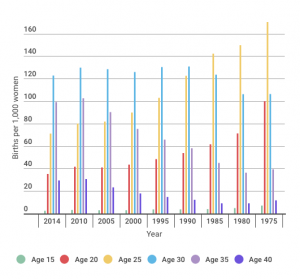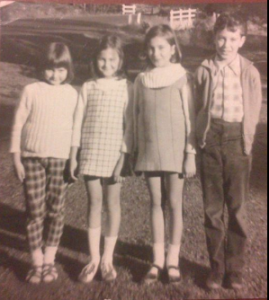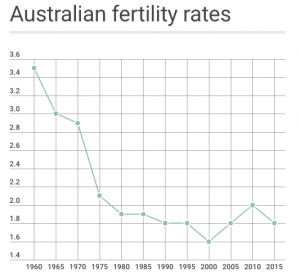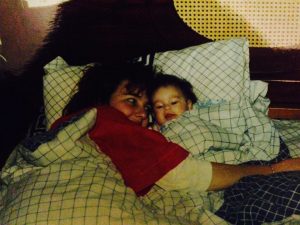Fertility Rates in Australia Drop, as Median Age of First-Time Mothers’ Increases
Recent ABS data suggests that now more than ever before, Australian women are opting to have children later in life – if ever at all. What factors have contributed to this drop in birth rates? And why are women choosing to become first-time mothers at an ever inclining age?
During the past four decades in Australia, the median age of women becoming mothers has slowly, but steadily, risen. This has led to Australia becoming an increasingly ‘ageing population’, which may have serious implications on our future economy.
Data from a 2014 report from the Australian Bureau of Statistics supports the claim that as time has passed, women are becoming less likely to procreate during their twenties, and instead opt to reproduce later in life. According to the most recent data, in 2014 thirty-one was the most popular age for women to bear their first offspring.

Table 1: The changing age of women bearing children every 5 years. Data sourced: ABS
However, table 1 illustrates that this was not always the case. In 1975, the most common age to have children was twenty-five; numbers that have since more than halved in Australia today.
Speaking to The Age, demography expert Professor Graeme Hugo has claimed that Victoria has experienced a lower birth rate than most states due to a higher disposable income and greater population density in the city.
This decline in birth rates and the median age of mothers is largely the result of an increased access to birth control, education, employment and overall higher living standards.
For seventy-six-year-old Valerie Whittet however, having her first child at the age of twenty in 1960 was not unusual for her generation. With the fertility rate during that year standing at 3.5 children, she soon had four children under four.

Valerie’s four children: from L to R: Christina, Diamando, Rubina and Peter. 1972
For the Baby Boomer generation, societal expectations were different regarding parenthood, and Valerie says that, ‘I was young and naïve and did not have aspirations at the time to pursue a higher education. I was taught that settling down and raising a family was the lifestyle I should aspire to’. As the data shows, Valerie was not in the minority of baby boomers starting families at a younger age.
In present day, it is most likely that a first time mother be over thirty-years-old.
Table 2 also illustrates the decline in fertility rates, with the average number of offspring falling from 3.5 in 1960 to 1.8 in 2014. But why this rapid decline in birth rates?

Table 2: Australian fertility rates every 1,000 births from 1960 – 2015. Data sourced from: ABS
Alana Papageorgiou, a twenty-nine-year-old current Victorian PHD student, is in no rush to settle down. She does not see either children or marriage in the foreseeable future.
‘’I think women are more liberated than ever before, and this means we are able to, for the first time, put our careers before starting a family,’ Miss Papageorgiou says.
Victorian mother, Julia Lyons, now fourty-six, had her first child in 2007 at the age of thirty-seven.
‘I had a good career in Tourism, and had always thought of settling down in the future, but never met the right person’.
This all changed when she met Peter, and has since added an additional two to her brood. Julia was 41 when her last child, Charlotte, was born.

Alana Papageorgiou with her own mother, in 1989.
‘Being an older mother has its challenges, but I feel like I was more ready to become a mother than I was in my twenties when I was still trying to figure out where I wanted to go with my life.’
However, obstetrician Dr Micheal Gannon warns that women bearing children over the age of 40 is often ‘more complicated … especially when it is their first child’.
If birth rates do not increase in the near future, Australia could face a lower standard of living, with less active participants in the workforce resulting in significant welfare losses. Additional budget pressures on the Australian government in health, aged-care and pension services will also put a higher strain on taxpayers.
Nonetheless, Professor Hugo ascertains that the current rate of 1.8 births per woman is not yet a concern for Victoria’s prosperity. However, if in the future it were to reach the 1.3 mark or below, there could be plausible cause for concern.
By Julia Hoffner.
